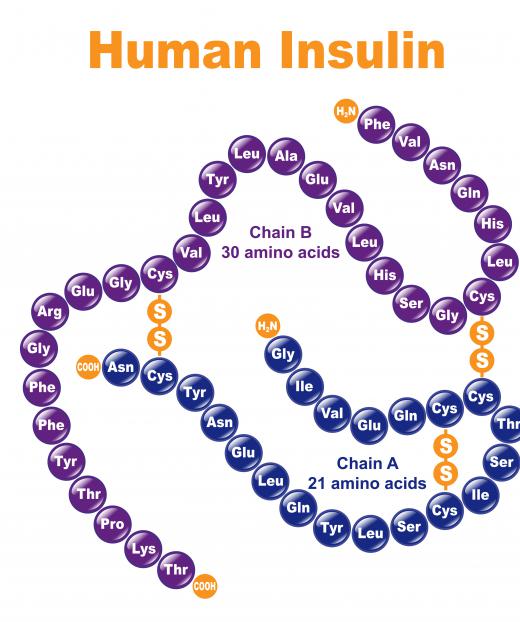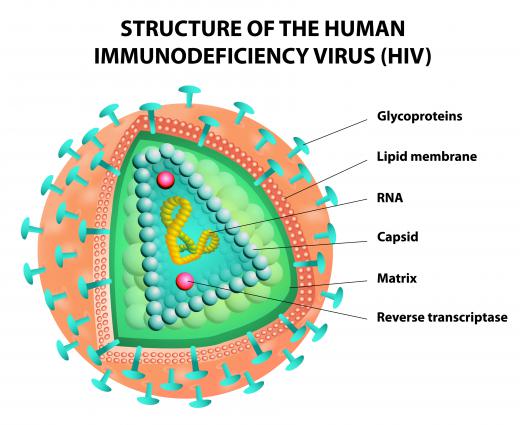What is a Reverse Transcriptase?
Reverse transcriptase is a type of enzyme found in a class of viruses called retroviruses, which include HIV, the Hepatitis B virus and some cancer-causing viruses. Retroviruses have RNA instead of DNA as their genetic code, and are able to do something that most other cells cannot - they can carry out the reverse process to transcription. In other words, they can make DNA from RNA. Reverse transcriptase, as the name suggests, is involved in this process.
In most cells, DNA carries the genetic information. During transcription, the DNA molecules are coded into RNA molecules. These RNA molecules are then used in the cytoplasm of the cell to create proteins, during the process of translation. Proteins determine what activities the cells carry out since they form enzymes and such molecules.

All viruses are parasites that live off their host cells. Most only consist of their genetic code, while a few also contain an enzyme, such as retroviruses and reverse transcriptase. To reproduce, viruses must infect a host and then use the host’s cells to pass on their genes. There are a number of different ways that viruses can reproduce, including the use of reverse transcriptase by retroviruses.

When retroviruses infect a host, they often completely enter the host cell and lose their protective coat in the process. Once in the host cell, reverse transcriptase carries out the reverse transcription process, making a DNA copy of the virus’s RNA chromosome. This DNA is referred to as cDNA because it is a complementary strand of DNA to the RNA.
Once the cDNA is formed, the copy is integrated into the DNA of the host cell. Often the cDNA and the genes it contains becomes a permanent addition to the host DNA. The cDNA is now copied and transcribed and translated with the rest of the DNA by the host cell’s enzymes during regular DNA replication, transcription and translation. This way, the virus is able to create further copies of itself and its enzyme, which are then expelled from the cell and can further invade other cells.

Reverse transcriptase was discovered in 1970 and has played an important role in genetic engineering ever since. This enzyme has been isolated from virus cells and then used to produce copies of DNA from different cells. One example of how reverse transcriptase has been used is to duplicate DNA that codes for a particular protein in a particular organ – insulin is one such example.

Diabetics used to be required to use insulin from horses or pigs for their injections. With the advent of genetic engineering, now human insulin can be produced. First, messenger RNA, or mRNA, that carries the instructions for producing insulin is isolated from the pancreas cells that produce insulin. Reverse transcriptase is added to the mRNA so that it can produce DNA copies, or cDNA. The cDNA now carries the genes for making insulin and can be used to manufacture large amounts for use by those that need it.
AS FEATURED ON:
AS FEATURED ON:















Discuss this Article
Post your comments